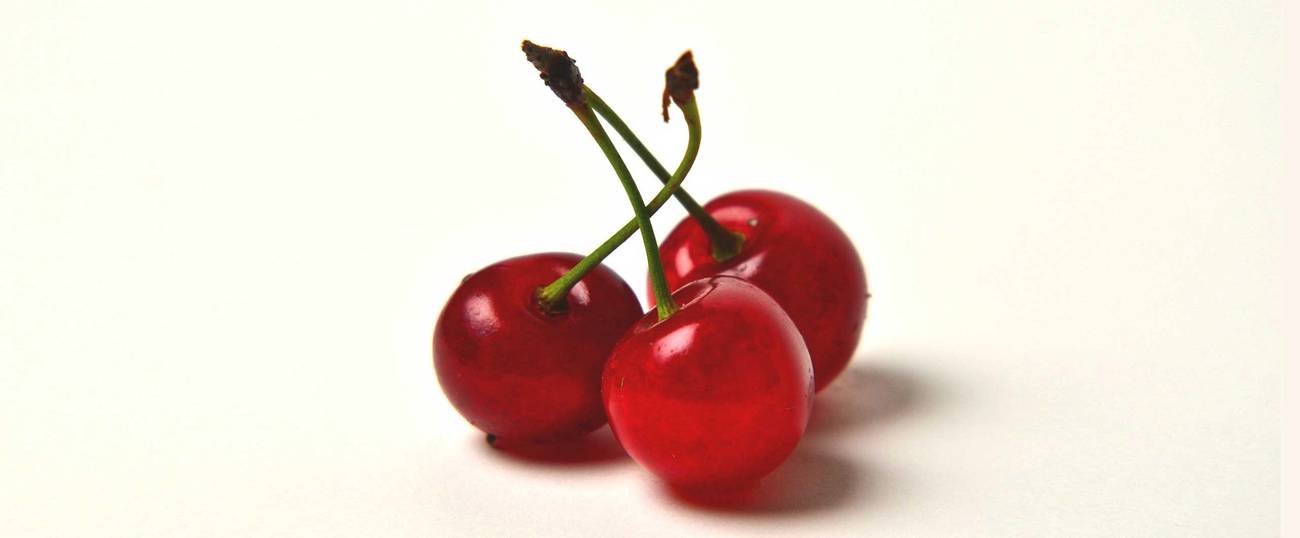The Sweetness of Sour Cherries
A summery bowl of soup reminds us that some things are worth the wait




Almost exactly five years ago, I tasted sour cherry soup for the first time. I was at a restaurant in Budapest, very pregnant and dining with an equally pregnant friend who had a powerful craving for dairy. Scanning the menu, her eyes lit up when she saw meggy leves, a chilled sour cherry soup enriched with sour cream. When it arrived—a light pink froth dotted with tart bits of fruit and capped with a billowy cloud of whipped cream—I didn’t quite know what to make of it. Was it a soup or a dessert or a smoothie in a bowl? But after a spoonful, followed quickly by several more, definitions hardly mattered.
There is something uniquely beguiling about the sour cherry. The fruit’s season is quite short—just a fleeting few weeks in early summer, which gives enjoying them a sense of urgency. And while closely related to sweet cherry varieties, the tiny ruby drupes are bracingly acidic. They are not a simple snacking fruit; they require a bit of attention and finesse (and often a good deal of sugar) to reveal their charms. But when treated properly, they pay back in flavorful dividends.
Like other summer fruits—currants, raspberries, and gooseberries, apricots, and prune plums—sour cherries were highly prized by Central and Eastern European Jews. When the season arrived, home cooks wasted no time making cherry soup and compote, baking them into cakes, strudels, and tarts, stuffing them into vareniki or kreplach, and preparing large batches of jam that would extend the precious fruit’s season.
“My great-grandmother Rosa … made a point of going to the market the very first day of sour cherry season,” said Sonya Gropman, who co-authored The German-Jewish Cookbook with her mother, Gabrielle Rossmer Gropman. “The market was a relatively short walk from where the family lived, but she made sure to have someone young and strong accompany her in order to assist in carrying home her purchase of a full case of sour cherries.”
The German-Jewish Cookbook has a recipe for chilled sour cherry soup, called Sauerkirschsuppe in German, and another for a chocolate and cherry cake. Hungarian Jews also bake meggy lepeny, a tender snacking cake studded with cherries. In The Joys of Jewish Preserving, Emily Paster includes a recipe for Russian-style sour cherry preserves where whole fruits are suspended in sweet syrup. “The fruit preserves are not spread on bread or toast, but rather eaten with a spoon to accompany tea,” she writes.
Sour cherries also found their way into the Ashkenazi liquor cabinet. “In Alsace, sour cherries are used to make the well-known cherry brandy called kirsch,” writes Gil Marks in The Encyclopedia of Jewish Food. “In Eastern Europe they are macerated with sugar and vodka for vishniak.”
Many of these recipes, Gropman told me, “were as far as we know, not very different (if at all)” from those eaten by non-Jews. And yet, they were deeply and decidedly important to Jewish families. Because sour cherries ripened around Shavuot, sour cherry blintzes and soup became important holiday dishes. Their tart flavor ushered in a season of summer freshness that offset the heavier cuisine Ashkenazi Jews typically prepared during the colder months.
Sour cherries are also a notable crossover ingredient within Jewish cuisine. Sephardi and Middle Eastern Jews are as likely to employ the fruits in savory dishes as sweet ones. They are part of a larger group of souring agents—along with tamarind, unripe grapes, green plums, pomegranate, and lemon—used to add tang to a variety of stews, sauces, and other dishes.
Persian Jews add the tart fruit to rice pilafs and make a distinctive cherry jam flavored with cardamom. Syrian Jews simmer meatballs in a sweet-tart sauce made with sour cherries—a dish that Joan Nathan calls “one of the great gifts of the Syrian Jews to gastronomy” in King Solomon’s Table. And in Italy, the cherries are a common filling for double-crusted tarts. At Pasticceria Boccione, a tiny, 200-year-old kosher bakery in Rome’s Jewish ghetto neighborhood, ricotta and sour cherry crostatas beckon from the windows and are a consistent customer favorite.
In addition to having a short growing season, sour cherries are too delicate to hold up well at grocery stores. The best place to spot them is in the early summer at the farmer’s market. When you see them, follow Gropman’s great-grandmother’s lead and buy as many as you and a friend can carry. Then, invest in a cherry pitter and get to work, using some of the haul immediately for pies, jam, or soup, and freezing the rest for another time. (Sour cherries freeze and thaw with no noticeable flavor deterioration.)
In a pinch, canned and bottled sour cherries are available year-round and can be used in baked goods. But like many canned fruits, they can have a flat or tinny taste that is off-putting in a vibrant dish like the rosy-colored soup I fell in love with in Hungary. For these dishes, only fresh (or fresh-frozen) cherries will do. In a sense then, sour cherry soup (recipe here) is a reminder that some things in life are truly worth the wait.
***
Like this article? Sign up for our Daily Digest to get Tablet magazine’s new content in your inbox each morning.